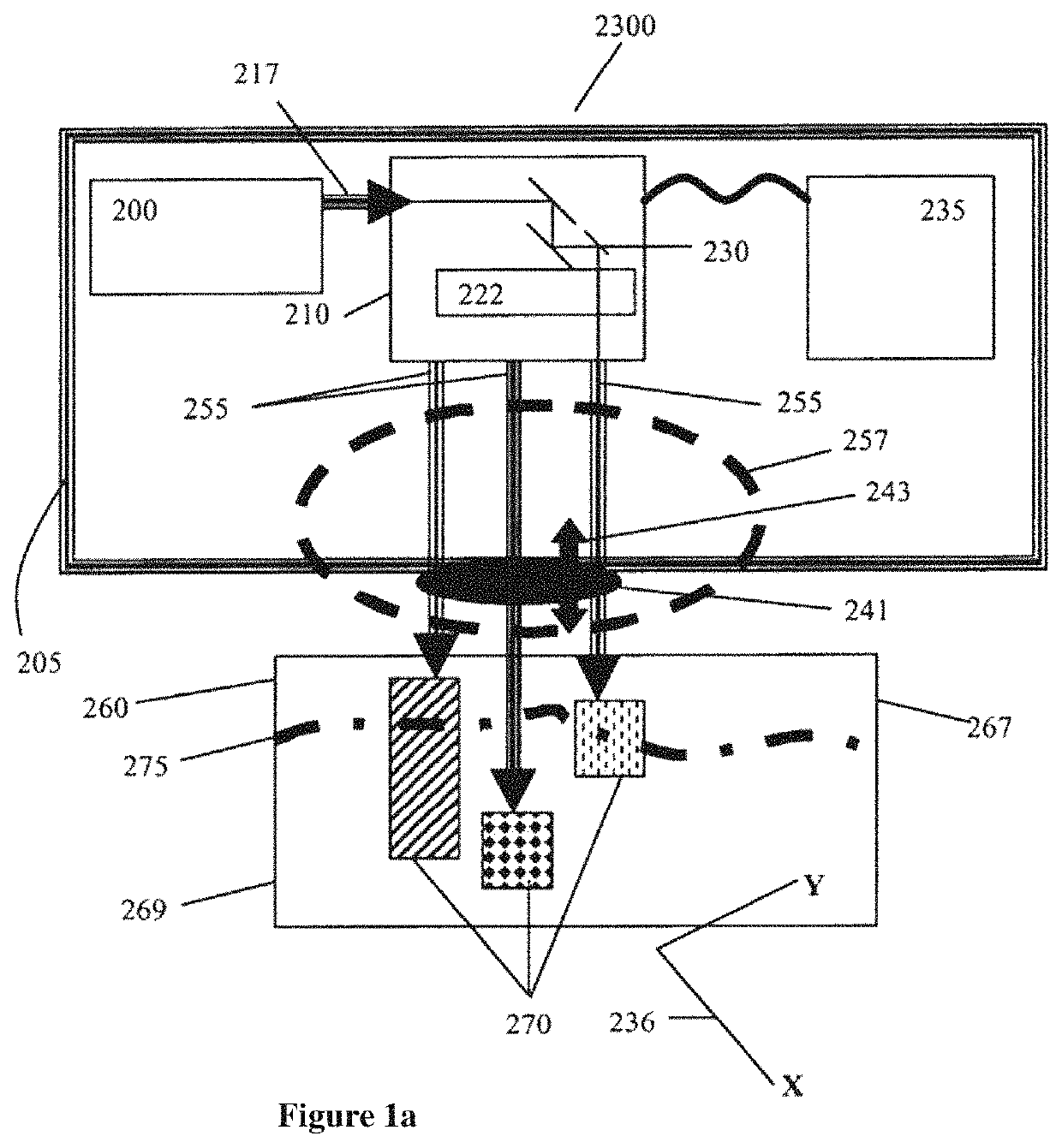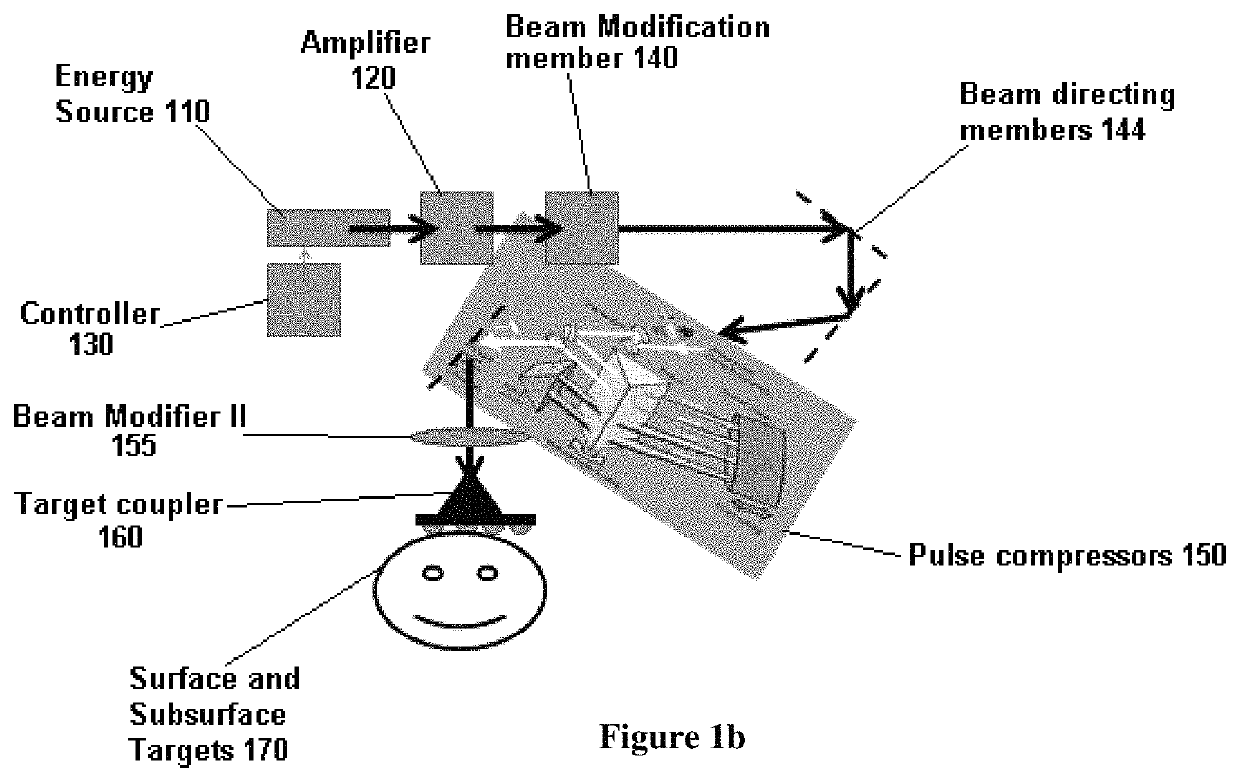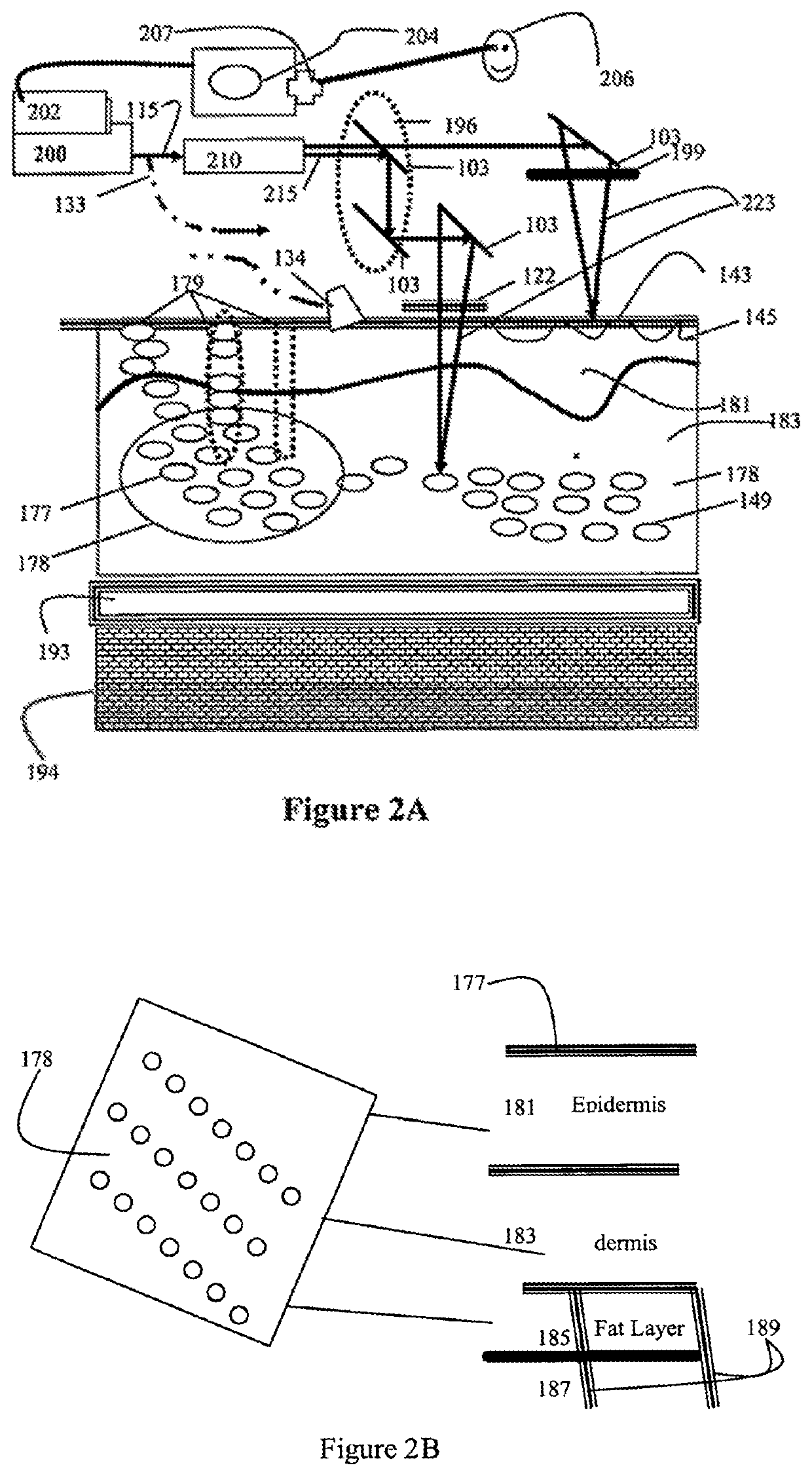Devices and methods for generation of subsurface micro-disruptions for biomedical applications
- Summary
- Abstract
- Description
- Claims
- Application Information
AI Technical Summary
Benefits of technology
Problems solved by technology
Method used
Image
Examples
example 1.88
Example 1. 88 MHz Device and Method for Non-Ablative Skin Rejuvenation
[0257]In turbid media such as the skin, multi-photon processes with low energy and high pulse repetition rate (PRR) (e.g. 88 MHz) can be used to create a non-ablative skin rejuvenation but with a higher precision targeting at the designated depth. Instead of heating the bulk of the skin, one can target the skin at a predetermined depth through multi-photon (MP) non-linear absorption at that depth due to the high photon density of the ultrashort pulses. At high PRR, sufficient heat accumulates to create a controlled thermal damage at that particular depth and that particular target location. Through scanning or other means of moving the beam (e.g. diffractive optics or Kinoform waveplate), a pattern of focal spots is produced where controlled thermal damage will occur. Using MP absorption based selective heating, no surface cooling is needed. Selective damage can thus happen without cooling of the surface, or at le...
example 2
hoton (MP) for Protecting Fruit Seeds and Vegetables
[0258]Here, a train of ultrashort laser or other energy pulses can be used to make the pattern and fill it with an insulating material. Protection can be achieved from bacterial agents, worms, biohazards, chemicals, pesticides (for organic-like material protection), from temperature variations, from mechanical disruption, from moisture, salts, contaminants, etc.
example 3
hoton (MP) Method and Device for Treating Acne
[0259]Here one targets sebaceous glands using a multi-photon process with low energy and a high pulse repetition rate (e.g. 88 MHz), reduce or eliminate acne. The effect can be either ablative, by focusing ultrashort pulses below the surface of the skin into the region of the sebaceous gland, or non-ablative, for example by using an ultrashort pulse laser (USPL) train of pulse and creating subsurface cumulative thermal modification processes such as heat accumulation by targeting ultrashort pulse (USP). Alternatively, one could create MP processes below the surface of the skin at the region close to or on the vicinity of the sebaceous glands thus partially or fully destroying or affecting the sebaceous gland so that over production of sebum or fat is reduced or eliminated.
[0260]An OCT, CDT, ultrasound, or any other guiding method can be used to help focus the beam onto the targeted region.
PUM
 Login to View More
Login to View More Abstract
Description
Claims
Application Information
 Login to View More
Login to View More - R&D
- Intellectual Property
- Life Sciences
- Materials
- Tech Scout
- Unparalleled Data Quality
- Higher Quality Content
- 60% Fewer Hallucinations
Browse by: Latest US Patents, China's latest patents, Technical Efficacy Thesaurus, Application Domain, Technology Topic, Popular Technical Reports.
© 2025 PatSnap. All rights reserved.Legal|Privacy policy|Modern Slavery Act Transparency Statement|Sitemap|About US| Contact US: help@patsnap.com



